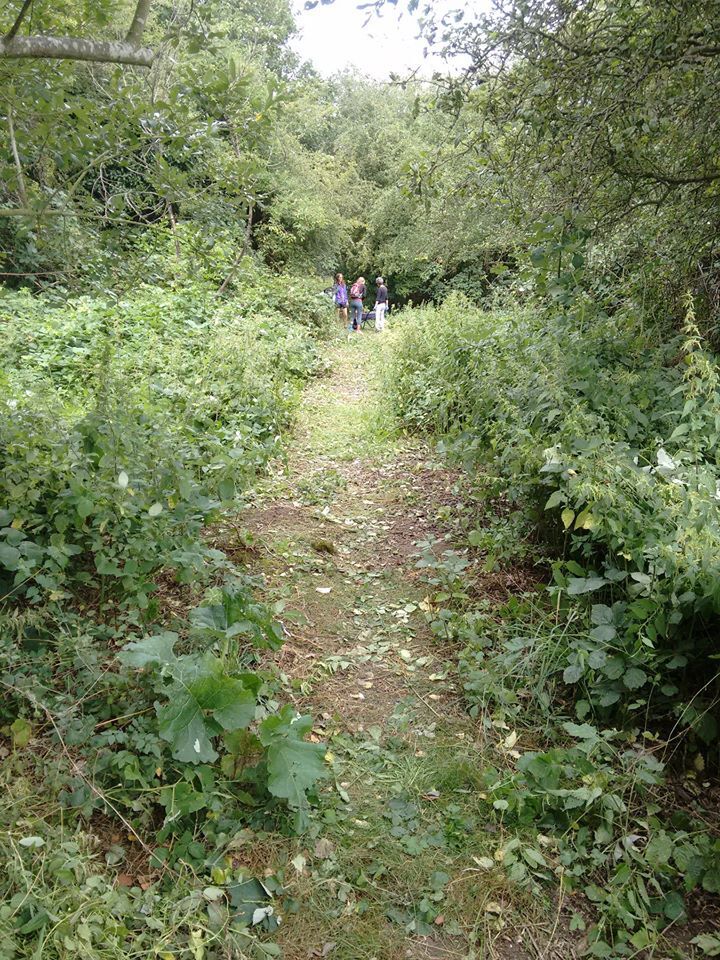Friends of Ham Lands management plan
Natural green spaces are few and far between in the urban areas and with a fast decline of spices both in flora and fauna. Because we have an intricate mixture of habitats on the Ham Lands it supports very rich biodiversity both of plants and animals. Our grasslands, scrubs, woodlands and reedbeds are all valued; each has its own character and role to play, both individually and interactively. However, we should remember that since the 1930s, 97% of our UK meadows have been lost therefore, our grasslands at Ham can be considered of regional (if not national) importance. Although we cannot boast that we have classic pristine meadows ours do come close and they support a surprisingly rich biodiversity. There is a crucial need to keep our grasslands in good order and make people aware of their value. We are lucky to have several wild flowers that are Nationally uncommon and many that are rare in the London area (e.g. Meadow saxifrage, Hoary Cinquefoil, Grass Vetchling, Yellow Vetchling and Bea Orchid.
Why is it not a good idea to allow nature alone to take its course?
Nature is constantly changing; it does not remain the same. If left alone, tall coarser herbs would dominate the grasslands while the delicate, uncommon plants would become scarcer. Then scrub (brambles and saplings) would overrun the grasslands. In turn, the scrub provides the shelter and shade needed for trees to become established and eventually mature. Ultimately woodland will dominate and grasslands and its flowers will be lost. This is known as ‘natural succession’.
How can management help?
Grasslands
Meadows, an important and much loved feature of the English landscape, remain as open grassland because livestock grazes them, or sometimes hay is cut. At the Ham Lands we cannot rely on grazing so the grasslands must be managed by mowing. If left uncut the taller, tufted grasses and rank plants such as thistles and stinging nettles will crowd out the more delicate, attractive and less common ones. Ideally mowing is planned to take place after the flowers have set seed so that the natural seed bank is never depleted and the invertebrate fauna has had time to feed. This is either in late August to September or early spring before the flower buds develop. Removal of the mowings is very important. If left, the ‘arisings’ enrich the soil, which would favour the rank plants over the delicate ones that thrive in poorer soils and cannot tolerate competition. Frequent, closer mowing is used to maintain amenity grasslands, such as King George’s Fields, but the biodiversity is always greatly reduced.
The planned spring mowing of the some of the coarser grassland areas is now on hold, but we are still expecting an autumn mow.

In the UK 97% of our meadows have already been lost, to read more about if click here.
It may sound obvious but 100 years ago Britain’s countryside was a very different place. Back then it would have been awash with colourful flower-rich meadows and grasslands that were an intrinsic part of our agriculture and people’s daily lives. This may not be the impression one gets while walking around, but those residents with longer memories of the Lands will be aware that the balance has changed a lot in the 50+ years since the Wates Estate was built.
Scrub
Patches of Bramble and Hawthorne scrub encroach the grassland. Scrub develops either as small island clusters centred around a Hawthorne bush or other sapling or as fringes spreading around woodland clumps. Although scrub provides valuable shelter and food for animals and birds the balance between scrub and grassland is crucial and should be maintained. Some clearance is constantly necessary if left alone scrub always outcompetes grassland. However, a few particular scrubby plants need particular consideration. A compact, small-fruited form of bramble, although unattractive and of no use to jam makers, is best left undisturbed as it is favoured by nesting birds, especially blackcaps. Until the 1970s Gorse and Broom were both plentiful at Ham but are sadly now in decline. Removing other scrubs from around our few remaining bushes aims to let in more light and should help them thrive.
Woodlands
We keep some paths open throughout the woodlands, so we people can enjoy walking here
Woodlands with tall trees are important for birds and roosting bats, mosses, lichens and many other things. Apart from the older riverside fringe of trees, our trees are mostly young (in tree terms) but some fine examples are developing. Our woodlands are managed to keep the paths through them open and to develop a few lighter glades and ‘rides’ to enhance biodiversity. These are especially good for butterflies. However, dense scrub has developed around the edges of the wooded clumps and this is seriously encroaching the grassland. Some trees, such as Elm and Cherry, spread by suckering (developing new shoots from the rootstock) and a lot of grasslands is being lost in this way. Many non-natives such as Holm Oak and Sycamore abundantly self-seed in the scrubby surrounds and crowd the more desirable tree specimens. To preserve the best trees the scrub is cleared from around them in a practice known as ‘haloing’. It is better to aim for the wood of good native trees than a crowded jumble of introduced species.

